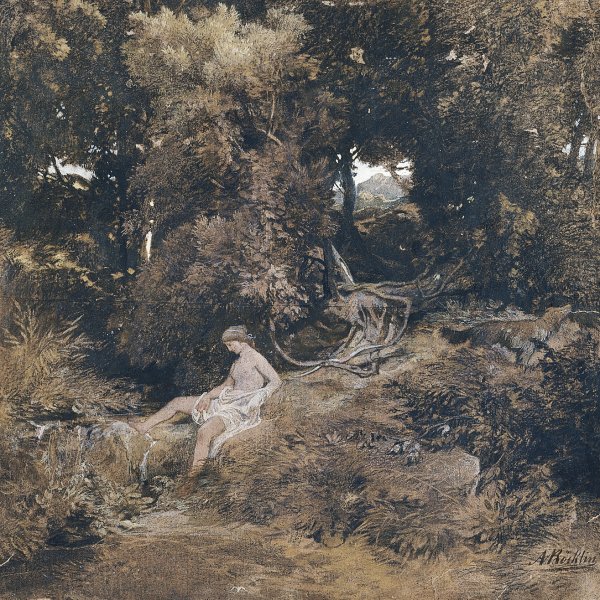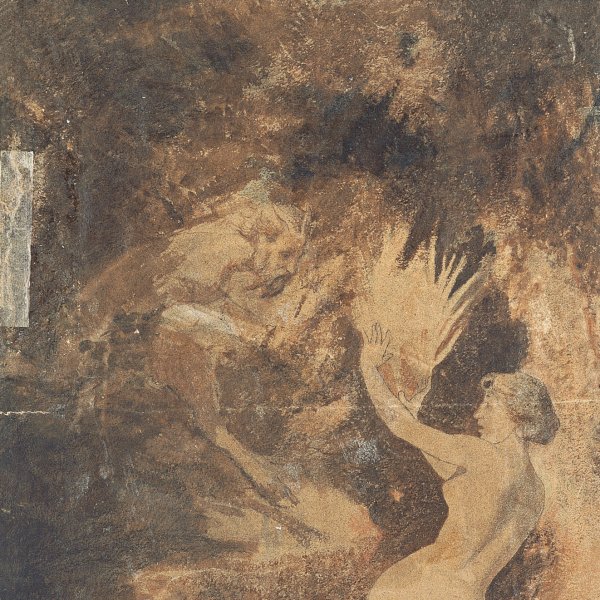Arnold Böcklin
Arnold Böcklin, a painter of Swiss origin, was one of the most famous and influential artists of nineteenth-century Germany. His works, which lie midway between reality and fantasy and are related to Romanticism and Symbolism, were greatly admired in his own day and rescued from oblivion by Giorgio de Chirico and other Surrealist artists.
After training initially in Basel, Böcklin studied from 1845 to 1847 at the Kunstakademie in Düsseldorf, where he met Carl Friedrich Lessing and Anselm Feuerbach. He then spent a year in Belgium and visited Paris. In 1850 he went to live in Rome, where he came into contact with the circle of German artists to which Oswald Achenbach and Feuerbach belonged. As a result of the impression classical culture caused him, his landscapes became settings for mythological themes in which the figures were depicted as mysterious beings that appeared to personify the forces of nature. After seven years he returned to Basel with his Italian wife and showed some of his works at the Kunstverein in Munich. The interest King Ludwig I expressed in his work contributed significantly to making him one of the most famous artists of the period. Also around this time he came into contact with Count Von Schack, one of his most faithful collectors, who secured him many commissions.
After working at the Kunstschule in Weimar in the early 1860s, Böcklin lived in Rome, Paris, Basel and Munich. In 1874 he settled in Florence, where he frequented the circle of the writer Adolf von Hildebrand and the painter Hans von Marées. Following a contract signed with the dealer Fritz Gurlitt, in 1880 his work began to enjoy great success in Berlin and Dresden. Finally, after spending five years in Zurich, he settled in Italy. In 1894 he moved into the Villa Bellagio in San Domenico near Fiesole, which he decorated with his son Carlo. He died in 1901.






